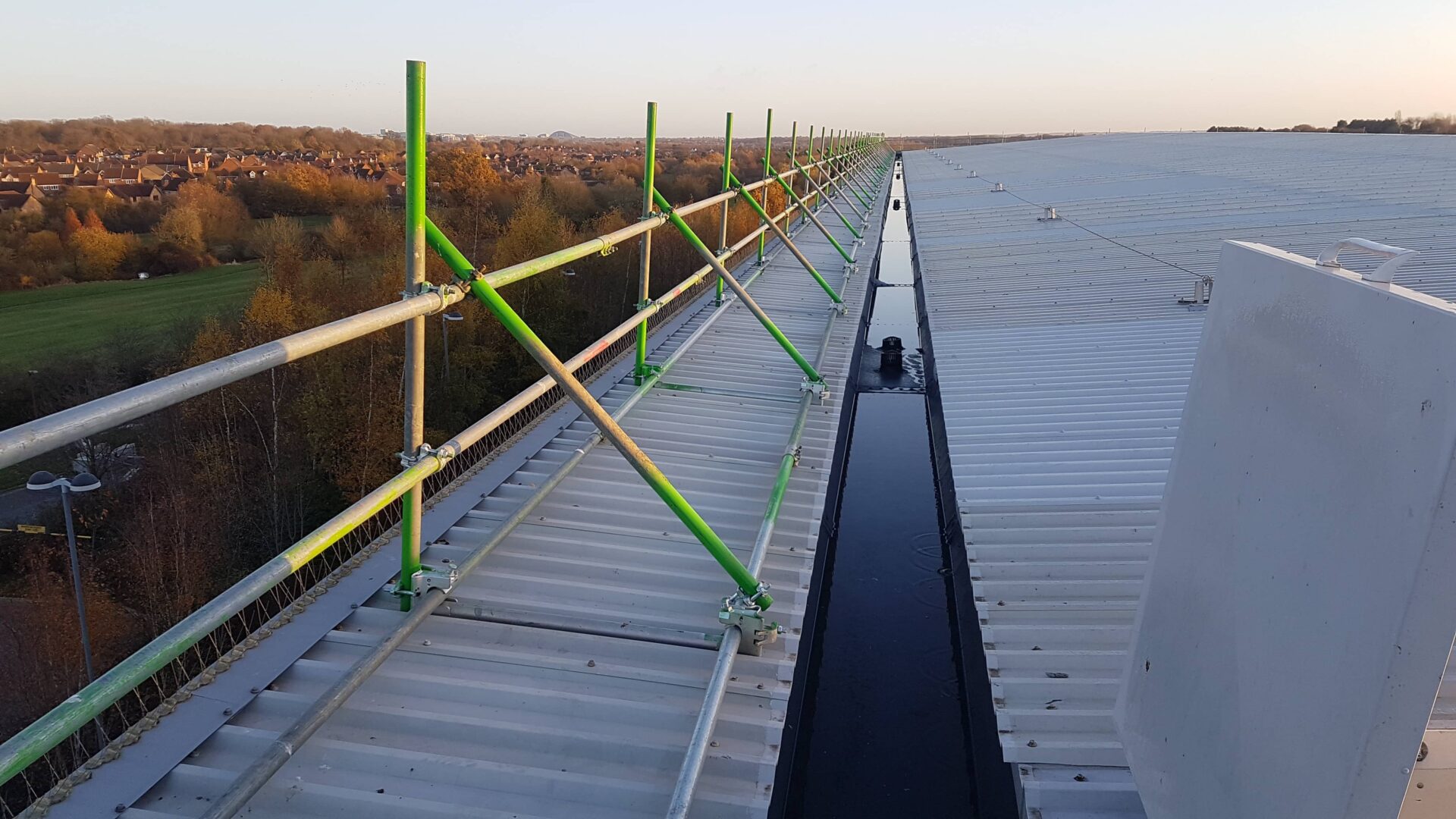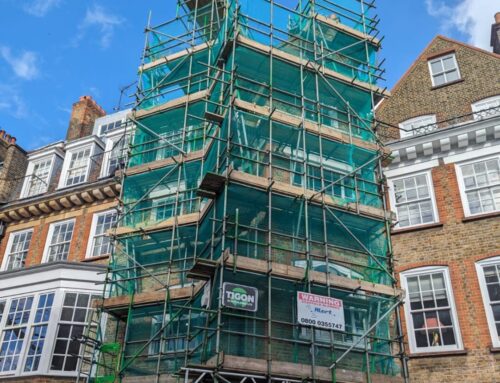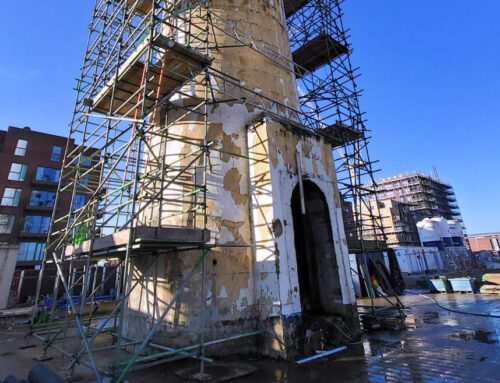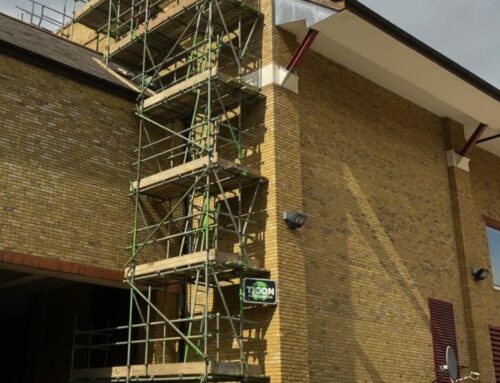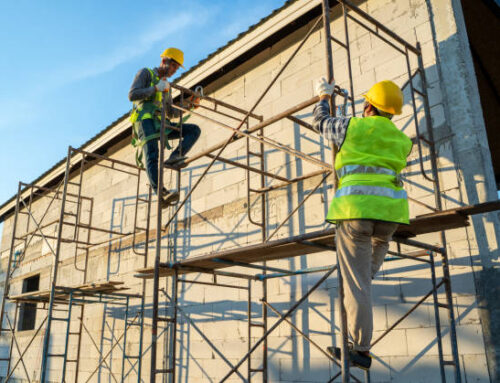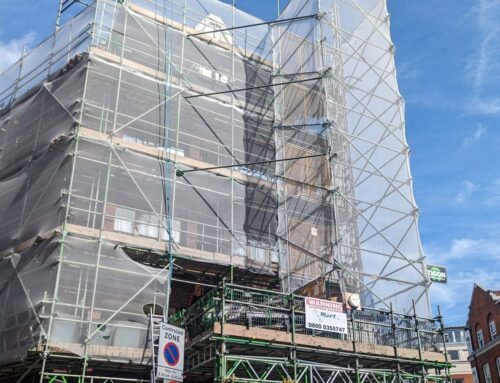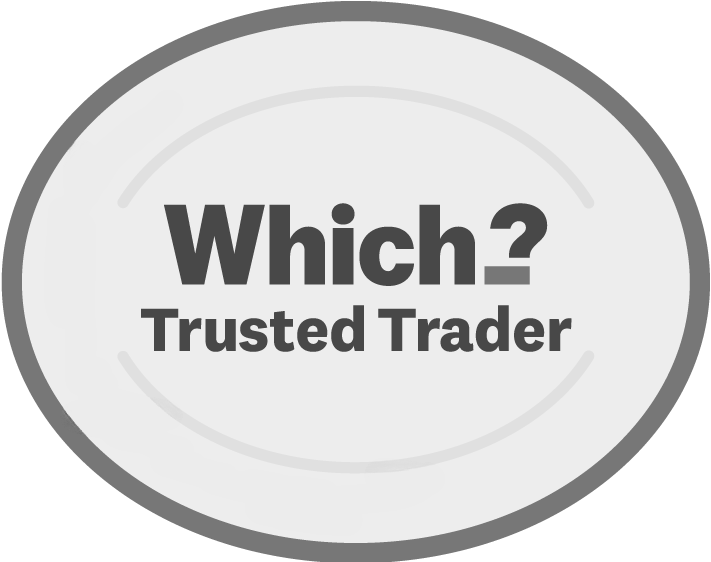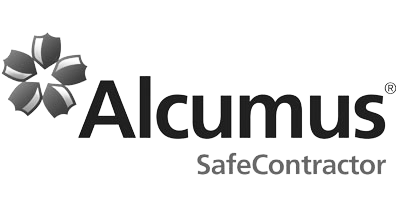Working in construction can be extremely dangerous, especially during the winter months. However, introducing height, heavy snow and icy conditions can make even the simplest tasks an extra risk.
If you are working on a scaffold, it is important to consider all hazards of working at height and how adverse weather may affect on-site conditions. As well as this, we know you still want to work as efficiently as possible to meet deadlines and ensure the project can be completed without a hitch.
So, while considering ways to avoid injuries and keep workers safe, it is also crucial to focus on ways you can ensure your risk assessment is robust enough to keep people working and prepare your team for the cold season.
Hazards of Working At Height
There are plenty of things you may be familiar with if you regularly work in construction or utilise scaffolding for your role. However, it is important to refresh your memory on other risks that may be seasonal.
Constant consideration and careful planning are the main ways in which you are going to be able to avoid any injuries and delays during winter.
Falling objects
In winter, there are more hazards that can fall from above. Snow and ice can fall from roofs or scaffolding, so it is important to be aware of your surroundings and wear the correct safety equipment.
Proactive planning and organising ahead of time can help to reduce the risks associated with falling objects. For example – skylight mesh and walkway systems already in place will add a layer of protection for domestic and commercial construction projects before it is even needed.
There is a possibility that anything of this nature could also damage the scaffolding structures underneath. This is another key consideration to make when attending the site and inspecting each area.
If there is an issue, our team is available 24 hours a day to carry out repairs and answer any questions you have regarding risks.
Hidden & Slippery Surfaces
With frost on the ground, wet leaves and the possibility of snow, it can be easy to slip and fall if you are not careful. It is important to clear any debris that may be around your work area and wear appropriate footwear with a good grip.
In addition to this, adverse weather can make any surface very slippery. Ice can be hard to see and even if you think the snow has been cleared or you’ve brushed away any debris – black ice could still be hanging around.
During winter the temperature doesn’t fluctuate much between night and day so it’s always worth taking a bit of extra time to lay down grit on scaffolding walkways as well as remove as much ice as possible from around the site.
Visibility
When it’s dark, or there are poor weather conditions, it can be more difficult to notice potential risks or even be fully aware of others working around you. First things first, it is important for the entire team to remember to wear high-visibility clothing and every precaution is taken to ensure your work area is well lit.
You should also think about the times of day you are working. If possible, try and avoid starting or finishing a task in the dark as this can increase the risks associated with the hazards of working at height during winter.
We understand that deadlines need to be met, so if it does mean working late into the night or beginning early – flood lights are a must. As well as this, scaffolding alarms come in handy during high winds and where there is a possibility of breakage. They will let you know if there’s anything that could pose a risk for your workers or that may warrant calling in our team.
Wind Chill & Hypothermia
In winter, the wind chill can make it feel much colder than it actually is. This can lead to workers getting cold and feeling uncomfortable which can then result in mistakes being made.
To combat this, dressing appropriately for the conditions is a no-brainer – but also taking care to ensure any PPE or clothing doesn’t inhibit movement. Taking regular breaks inside if possible to escape the height of any scaffolding and get out of the wind can also help people regroup and warm up ready for more work.
Of course, it is up to the leadership team to call off the job if you believe any unsafe practices are occurring or people have become unable to carry out their roles safely.
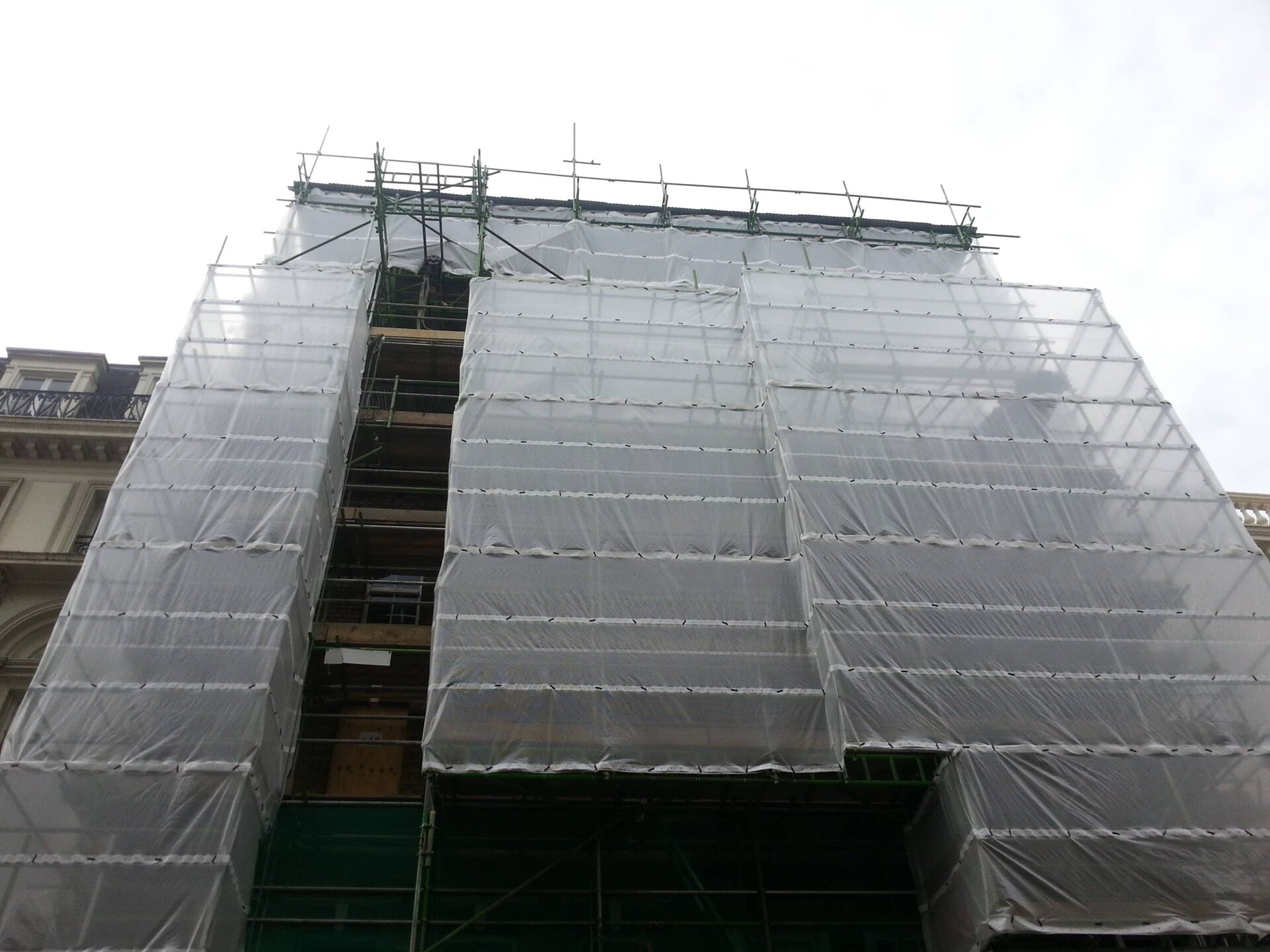
Safeguarding Your Team
A little goes a long way – and this is especially true in winter. If you’re looking to implement new ways of avoiding the hazards of working at height, there are several things you can do to make sure your team is safe and prepared for the colder months:
Check that all equipment is well maintained and fit for purpose:
This includes everything from handrails and guardrails to access equipment like ladders, steps, and scaffolding.
It is more important than ever to run a few extra checks when you know there are more possible risks. It is easy to overlook certain things when they haven’t been an issue for the last 6 months of the year.
Ask yourself, has there been a frost overnight? Will it impact any tools in particular or will we need to check the safety measures already in place? This may include making sure netting isn’t being pulled by heavy snow or layers of ice as well as ensuring ladders have enough grip both on the ground and the rungs themself.
Ensure that any risks are well marked and signed:
Hazards of working at height could be anything from loose tiles to snow-covered walkways. It is important that your team is aware of these risks so they can take the necessary precautions.
Small or insignificant changes in the site can still cause injury or problems when attempting to carry out work. It is for this reason that you should make each one and ensure every team member is aware and use signposting where possible or necessary.
This can help remind workers throughout the day without them having to slow the pace or remember to avoid certain areas of the site. Clear messaging makes the place safer for workers as well as visitors. Risks are immediately obvious.
Carry out a thorough risk assessment:
A risk assessment should be carried out before any work begins. This will help you identify potential risks and put measures in place to mitigate them.
It may also involve considering new PPE that could help workers carry out their roles more safely and efficiently as well as ensuring all scaffolding structures are safe for use.
Prepare for bad weather:
Adverse weather conditions can create new hazards or make existing ones worse. Make sure you have a plan in place for dealing with bad weather, including contingencies for delays or disruptions to the work schedule.
This may include bringing in extra materials to make sure the job can still be completed on time or making sure there are enough resources available on-site in case deliveries and other movements get cancelled or delayed.
Preparing For The Hazards of Working At Height
Construction work involving scaffolding can be dangerous at any time of year, however, winter poses some extra risks that need to be carefully considered.
But, with the right precautions in place, winter doesn’t have to put everything on hold. By being aware of the hazards and taking steps to mitigate them, you can ensure your team stays safe all season long.
When you hire a temporary access solution like domestic or commercial scaffolding, we highly recommend inspections at regular intervals throughout a project as well as after high winds or snowfall and extreme cold.
Our team are experts at erecting scaffolding and are well versed with the hazards of working at height. We will carry out checks once the structure has been built and are always available 24 hours a day to attend the site if you have any concerns or questions.
Working with a company like Tigon Scaffolding can give you peace of mind that this section of your site is undergoing regular upkeep and has been erected to the highest standards – following all regulations and taking your safety into account.
If you have any questions or would like to discuss your scaffolding options with us, please don’t hesitate to get in touch. Our team is always available and happy to help!


